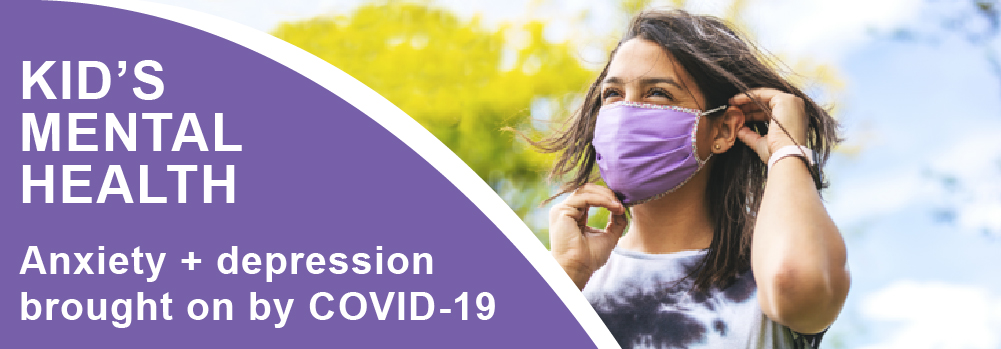
Source: American Academy of Pediatrics
With many adults and older children vaccinated against COVID-19, this Halloween is back to being scary in all the right ways. Still, as COVID-19 continues to spread, celebrating safely remains a priority. There are many households with young children that are not yet eligible for the vaccine, or friends and family that are immunocompromised, and for them it’s important to keep Halloween traditions safe. We pulled together recommendations from the American Academy of Pediatrics to ensure this year’s celebration is all treats, no tricks.
Giving Out Candy
- Avoid direct contact with trick-or-treaters and give treats outdoors, if possible.
- Set up a table with individually bagged treats for kids to take.
- Wash hands or use hand sanitizer before handling treats, and in between trick-or-treaters.
- Non-food items can be a nice change from the usual candy, too. Especially for kids that suffer from food allergies.
Trick-or-Treating
- Stick with outdoor trick-or-treating when possible and stay in small groups.
- Avoid large groups of kids huddled around a doorstep. Stand back and wait for your turn.
- Wear a mask
- Make the mask as part of the costume (think nurse or surgeon, superhero, ninja)
- A costume mask is not a substitute for a mask with several layers of breathable fabric or a disposable surgical mask that fits over the mouth and nose snuggly.
- Do NOT wear a costume mask over a cloth mask. It can make breathing more difficult
- Masks should NOT be worn by children under the age of 2 or anyone who has trouble breathing
- Wash your hands
- Bring hand sanitizer with you and use it after touching objects or other people
- Use hand sanitizer with at least 60% alcohol
- Parents: supervise young children using hand sanitizer
- Wash hands with soap and water for at least 20 seconds when you get home and before you eat any treats
Indoor Activities
- If you or your children do attend an indoor activity, be sure to mask up and keep a social distance. There will be a mix of vaccinated adults and teens as well as unvaccinated attendees and wearing a mask will reduce the risk of transmitting COVID-19 or other seasonal viruses.
If you decide not to take your kids trick or treating this year, here are some ideas how you can enjoy Halloween safely.
- Decorate and carve pumpkins
- Decorate your home for Halloween.
- Carve pumpkins with members of your household or outside with neighbors or friends.
- Walk from house to house, admiring Halloween decorations at a distance.
- Visit an orchard, forest, or corn maze. Attend a scavenger hunt.
- Go on an outdoor Halloween-themed scavenger hunt.
- Visit a pumpkin patch or orchard. Remember to wash your hands or use hand sanitizer frequently, especially after touching frequently touched surfaces, pumpkins, or apples.
- Go to a one-way, walk-through haunted forest or corn maze.
- Other Ideas
- Hide Halloween treats in and around your house. Hold a Halloween treat hunt (think like an Easter Egg hunt) in the house and yard. Try turning off the lights and hunting with flashlights!
- Hold an outdoor costume parade or contest so everyone can show off their costumes.
- Host an outdoor Halloween movie night with friends or neighbors or an indoor movie night with your household members.
If you have any concerns around upcoming holiday gatherings or general questions about your child’s health, contact your pediatric provider. They can help.
For more helpful information about kids and Halloween, check out these articles from the American Academy of Pediatrics:
- Avoid a Food Allergy Scare on Halloween
- Face Paints & Makeup: Choose Carefully to Avoid Toxic Ingredients
- Decorative Contact Lenses: What Teens and Parents Need to Know










